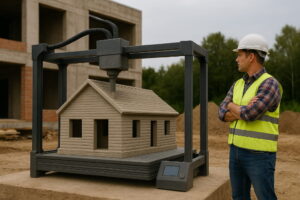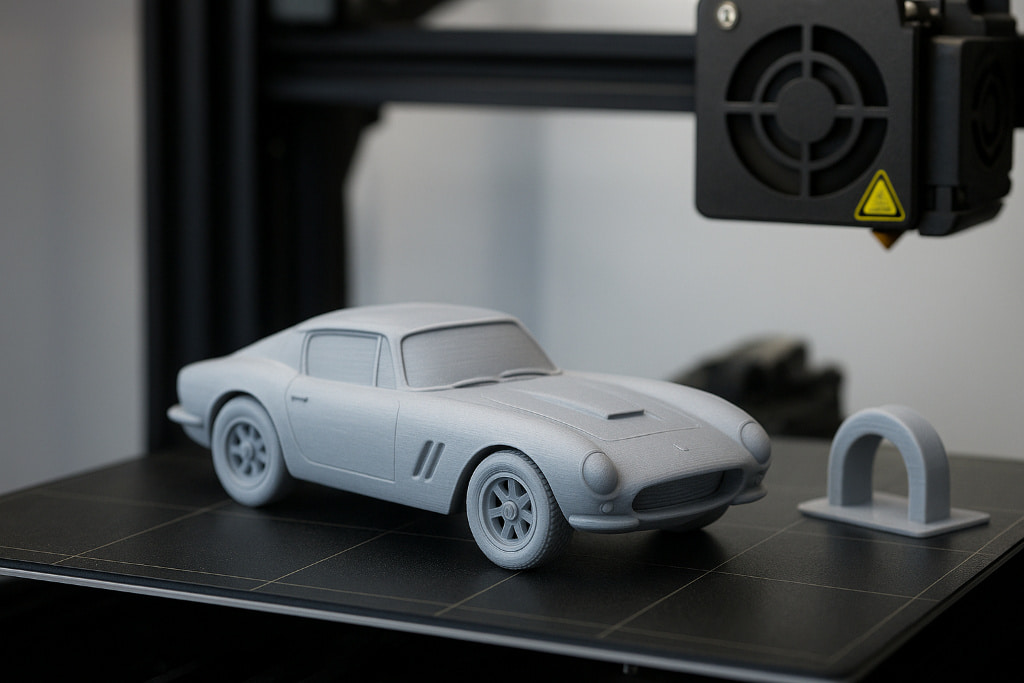
- +91 8055996347
- info@3dreality.in
- Chapru nagar square, CA road, Nagpur, Maharashtra-440008

Have you ever looked at a tiny, incredibly detailed model and thought — “How do they even make something that small so perfect ?”
Here’s the secret: 3D printing technology.
From fantasy figurines and architectural miniatures to intricate car and character models, miniature model 3D printing has completely changed the way creators bring imagination to life. But the real magic lies not just in printing — it’s in the journey from a raw concept to a stunning display-worthy masterpiece.
So, what does it actually take to go from an idea to a flawless miniature that steals the show? Let’s dive in.
Every great miniature starts with a spark of imagination. It could be a superhero, a futuristic car, or even a replica of your dream house.
But here’s the twist: not every design works in miniature form. The real skill lies in converting your concept into something printable, while keeping all the tiny details intact.
Designers use advanced 3D modeling software like Blender, Fusion 360, or ZBrush to shape their ideas digitally. This is where creativity meets precision — and it’s also the stage where many beginners get hooked.
Pro Tip: Before you start modeling, sketch your concept. A clear vision helps ensure your miniature is not only eye-catching but structurally sound.
Once your design is ready, it’s time to prepare it for the printer. Sounds simple, right? Not so fast.
This is where the suspense begins. A perfect digital model doesn’t always mean a perfect physical print. Small design errors, hollow spaces, or thin walls can ruin your miniature. That’s why professionals use slicing software like Cura or PrusaSlicer to analyze the model layer by layer.
You’ll need to:
It’s a meticulous process, and one small mistake could mean starting all over again.
Here’s where art meets engineering.
Whether you’re using resin 3D printers for ultra-fine detail or FDM printers for larger miniatures, every print feels like a suspense movie — you’re never fully sure how it’ll turn out until it’s done.
The printing process can take anywhere from a few hours to several days, depending on the model’s complexity. And when that print bed finally moves down to reveal your creation… it’s pure magic.
The print is done — but the masterpiece isn’t ready yet.
This stage is what separates an average model from a collector’s showpiece. Post-processing includes cleaning, curing, sanding, and painting your miniature to perfection.
And here’s the part that hooks every creator — painting. Watching a dull gray model transform into a lifelike miniature with realistic textures and vivid colors is deeply satisfying.
After hours (or even days) of effort, it’s finally time to showcase your creation.
Some prefer building custom display bases with lighting effects, while others design transparent cases using 3D printing itself. The goal? Make your miniature shine as if it belongs in a museum.
And if you’re a business, this step is where 3D printed miniatures truly pay off — they attract attention at exhibitions, impress clients, and even become collectible products.
Miniature 3D printing isn’t only about creating small models — it’s about bringing imagination to life in a tangible form. It’s an art form that blends creativity, technology, and patience.
Whether you’re an architect designing scale models, a gamer printing custom characters, or an artist making collectibles, miniature model 3D printing opens endless possibilities.
And here’s a thought to leave you curious — what if the next big 3D printing innovation allows your miniature models to move or light up automatically ?
It’s closer than you think — and that’s a story for another day.
From concept sketches to finely painted showpieces, the journey of Miniature Model 3D Printing is filled with creativity, suspense, and satisfaction. Every stage tests your patience — but the result is worth every second.
So the next time you see a detailed miniature, remember: behind that tiny masterpiece lies a big story of imagination, precision, and innovation.
And who knows — your next 3D print could be the one that turns heads everywhere.
If you want your own 3D Miniature Model, visit 3dreality.in
We are experts in 3D printing — we print and deliver your miniature models with awesome quality, using high-grade filaments to ensure precision, durability, and detail that will leave you amazed.
Bring your imagination to life — because at 3D Reality, your vision deserves to be printed perfectly.